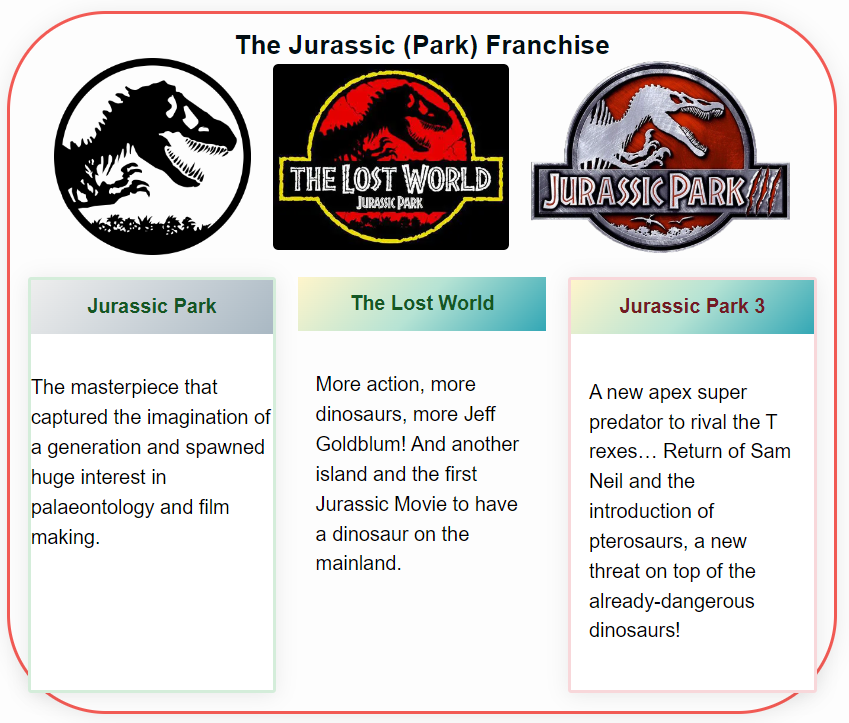Exploring the Science Behind Dinosaur Resurrection

Ever since the release of the blockbuster film Jurassic Park in 1993, the prospect of bringing dinosaurs back to life has fascinated the public (and me) and captured imaginations.
The central concept of the film, where scientists recover dinosaur DNA from mosquitoes preserved in amber and use it to clone the extinct creatures, raises the question of whether such a scenario could indeed become a reality.
Scientific advances in the fields of genetics and biology have allowed for significant progress in understanding the building blocks of life, but the possibility of creating a real-life Jurassic Park still remains a subject of debate amongst experts. Some believe that it may eventually be possible to recreate dinosaurs or, at least, gain insights into their biology using preserved material, while others maintain that the many technical and ethical challenges involved make such a venture highly unlikely.
There seems to be a perpetual discussion around the possible resurrection of more recent extinct animals from Woolly Mammoths to the Dodo and even the Tasmanian Devil. Like fusion power, we always seem to be several years away from recreating these creatures but not getting any closer.
This helps put into perspective how we struggle to clone a creature that died out hundreds or tens of thousands years ago, let alone an animal that died millions of years ago…
Let’s explore the current state of research and knowledge related to the feasibility of recreating a Jurassic Park, drawing upon the latest findings from experts in the fields of palaeontology, genomics, and de-extinction science.
Jurassic Park Concept
Background and Idea
Jurassic Park, a well-known science fiction novel by Michael Crichton, was adapted into a blockbuster film by Steven Spielberg in 1993. The intriguing premise of the story involves creating a theme park populated by cloned dinosaurs. For over 30 years, this concept has captured the imagination of people worldwide, leading many to speculate if such a park could be a reality.
The idea behind Jurassic Park revolves around extracting dinosaur DNA from fossilised amber and combining it with amphibian genes to fill in the gaps. This engineered DNA would then be used to grow living dinosaurs to populate the park. In later films, particularly the Jurassic World series, the gaps are filled in with a variety of DNA from other animals to bring out specific traits.
Genetic Engineering in Fiction
Jurassic Park’s concept of genetic engineering captures the imagination but raises questions about its scientific plausibility. In the story, scientists successfully clone dinosaurs by combining ancient DNA with genetic material from living organisms like amphibians.
In reality, the prospect of creating a real-life Jurassic Park remains elusive. Despite advances in genetic engineering, the likelihood of resurrecting dinosaurs is slim. One issue is the degradation of DNA over time; dinosaur DNA would have degraded so significantly that obtaining usable genetic material is nearly impossible. Scientists are, however, exploring the possibility of reconstructing or synthesising partial genomes using preserved fossils and advanced computer algorithms.
While the notion of a real Jurassic Park is still confined to the realm of fiction, genetic engineering has made significant strides in recent years. These advances contribute to our understanding of ancient life forms and may one day offer new insights into the world of dinosaurs. However, as of now, the concept of a dinosaur theme park remains a fascinating idea best enjoyed through films and literature.
Current Genetic Technologies
DNA Extraction and Sequencing
In recent years, advancements in DNA extraction and sequencing have opened up new possibilities for resurrecting extinct species. For example, scientists have successfully extracted the DNA of the extinct woolly mammoth and sequenced its complete genome1. While the process of extracting ancient DNA is still challenging, ongoing research continues to improve the accuracy and efficiency of DNA sequencing technologies.
Gene Editing Tools
One of the most significant breakthroughs in genetic engineering is the development of gene editing tools like CRISPR-Cas9. This powerful technology enables scientists to make precise alterations to an organism’s DNA, allowing them to insert or remove specific genetic traits2. CRISPR-Cas9 has been instrumental in creating genetically modified organisms, such as mosquitoes resistant to malaria3.
Although recreating dinosaurs like in Jurassic Park is beyond our current capabilities, recent genetic technologies do hold potential for the resurrection of more recently extinct species. An example of this is the effort to save the endangered black-footed ferret by using frozen cells from the 1980s to create a genetically diverse population4.
While Jurassic Park remains a work of science fiction, the innovations in current genetic technologies have certainly paved the way for fascinating possibilities in the world of biotechnology.
Footnotes
- https://www.nature.com/articles/nature145712 ↩
- https://www.nature.com/subjects/crispr-cas9 ↩
- https://www.sciencemag.org/news/2021/08/gene-edited-mosquitoes-fight-malaria-pass-their-sterile-genes-offspring ↩
- https://www.theguardian.com/science/2022/jun/21/life-will-find-a-way-could-scientists-make-jurassic-park-a-reality ↩
Challenges and Limitations
Ancient DNA Degradation
One of the main challenges in recreating dinosaurs like in Jurassic Park is the issue of ancient DNA degradation. DNA material from extinct species has a limited lifespan before it becomes unusable for cloning purposes. Over time, DNA strands break down and lose their structure, making it difficult or even impossible to extract information from them1. In addition, the chances of obtaining perfectly preserved dinosaur DNA from insects in amber, as depicted in the film, are incredibly slim2.
Ethical Considerations
Another obstacle in bringing dinosaurs back to life is the ethical considerations involved. Cloning extinct animals raises a multitude of ethical questions surrounding animal welfare, the effect on ecosystems, and the implications of playing “God” by reviving long-dead species3. Some scientists argue that resources and efforts should be focused on preserving existing species and ecosystems, rather than trying to recreate extinct creatures4.
In conclusion, although the concept of Jurassic Park captivates our imagination, it remains a work of fiction due to the challenges of ancient DNA degradation and the ethical dilemmas surrounding cloning extinct species.
Footnotes
- (https://www.iflscience.com/iflscience-the-big-questions-is-jurassic-park-possible-69267) ↩
- (https://www.bbc.com/news/science-environment-44293060) ↩
- (https://www.theguardian.com/science/2022/jun/21/life-will-find-a-way-could-scientists-make-jurassic-park-a-reality) ↩
- (https://www.theguardian.com/culture/2021/feb/22/reality-bites-could-jurassic-park-actually-happen) ↩
Potential Alternatives
De-Extinction of Closely Related Species
While the idea of reviving dinosaurs like in Jurassic Park might not be feasible, scientists have been exploring the possibility of de-extinction of closely related species. The concept involves using preserved genetic material from extinct species and combining it with living organisms to recreate lost species.
In recent years, there have been attempts to revive the woolly mammoth, a species that went extinct about 4,000 years ago. Scientists have extracted well-preserved DNA from mammoth remains found in the Arctic permafrost and used it to recreate portions of the mammoth genome. They aim to introduce these genes into the DNA of their closest living relative, the Asian elephant, to create a hybrid animal with traits of both species.
Engineered Theme Parks with Existing Species
Another potential alternative to a real-life Jurassic Park is the creation of theme parks featuring modified existing species. Although dinosaurs may not be an option, scientists can explore the possibility of genetic engineering to create creatures resembling prehistoric animals.
For example, there have been successful experiments in which researchers have modified the genes of chicken embryos to develop alligator-like teeth and a dinosaur-like snout instead of a beak. This approach could give a glimpse into the past by studying the appearances and behaviours of these modified animals, without needing to recreate actual extinct species.
By focusing on these alternatives, scientists may be able to develop a greater understanding of the biology and evolutionary process of extinct species, whilst providing a unique, educational, and entertaining experience for the public.
Frequently Asked Questions
Can dinosaurs be resurrected?
It is currently not possible to bring dinosaurs back to life through cloning or other methods. Dinosaurs went extinct around 65 million years ago, and their DNA has degraded over time, making it nearly impossible to extract viable genetic material for resurrection.
Can DNA recreate Jurassic Park?
While some scientists have been able to extract fragments of ancient DNA from fossils, the DNA would be far too fragmented and incomplete to recreate Jurassic Park. In addition, we are still far from fully understanding the complex process of recreating an extinct organism solely based on its DNA.
Is a real-life Jurassic theme park possible?
A real-life Jurassic theme park filled with living, breathing dinosaurs is not possible at this time. Besides the challenges mentioned above regarding DNA resurrection, there would also be numerous ethical and ecological concerns associated with recreating extinct animals and housing them in a theme park environment.
Will dinosaurs return by 2050?
It is highly unlikely that dinosaurs will be resurrected by 2050. Although technology and scientific understanding are constantly advancing, the obstacles of extracting viable DNA and fully understanding the process of de-extinction still persist. Additionally, ethical and ecological concerns will likely continue to be barriers to recreating dinosaurs.
Could Jurassic Park science work?
The science portrayed in Jurassic Park relies on extracting DNA from insects preserved in amber, which contain the blood of dinosaurs. However, studies have shown that it is improbable to find well-preserved dinosaur DNA in amber. Furthermore, the process of reconstructing an entire organism based on fragmented DNA remains a significant scientific challenge.
Is Jurassic World scientifically accurate?
While Jurassic World is a science fiction film based on the idea of recreating dinosaurs, it should not be considered scientifically accurate. The film takes creative liberties to portray extinct creatures and scenarios that are not supported by our current understanding of genetics, biology, or paleontology.

